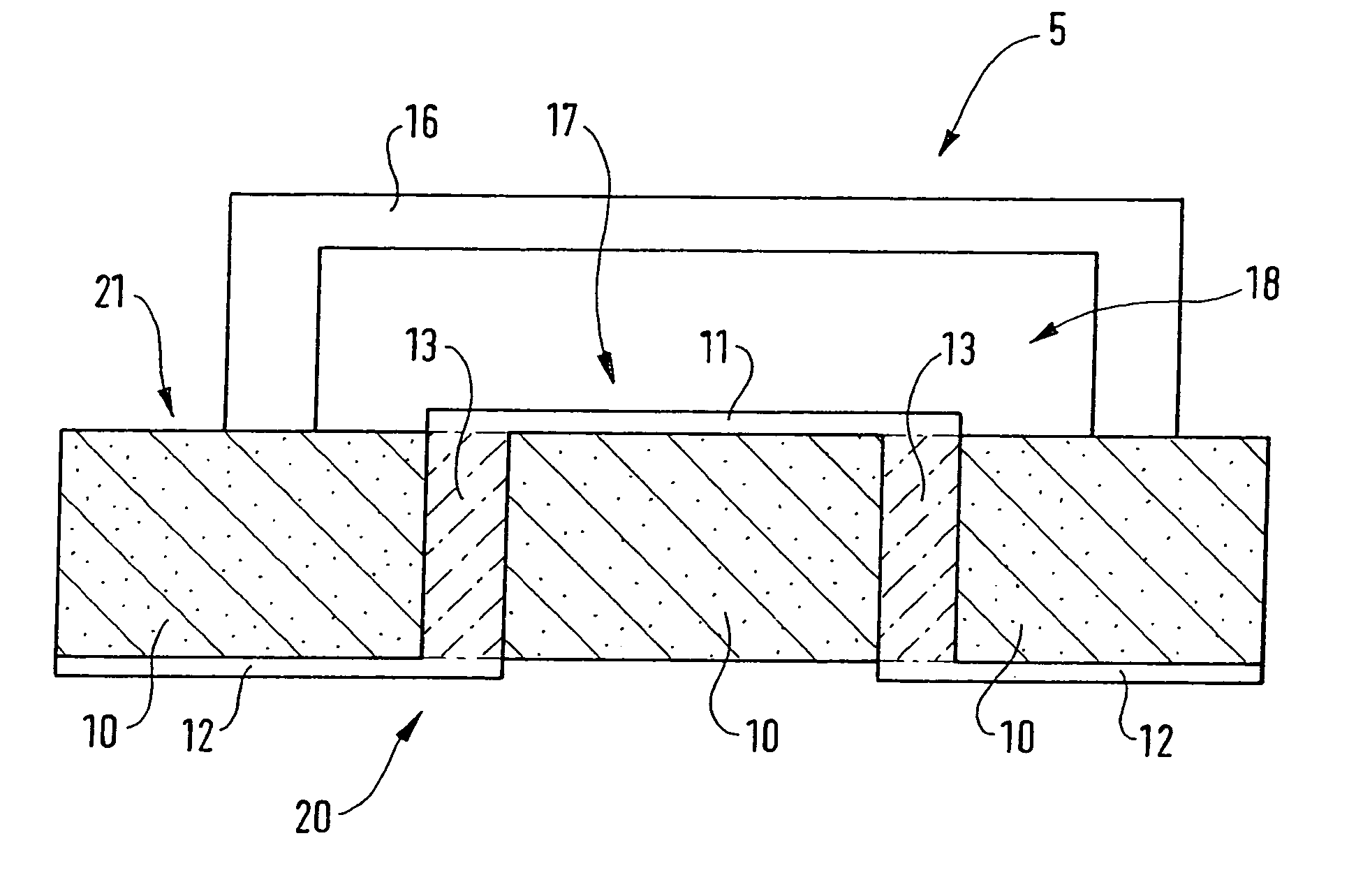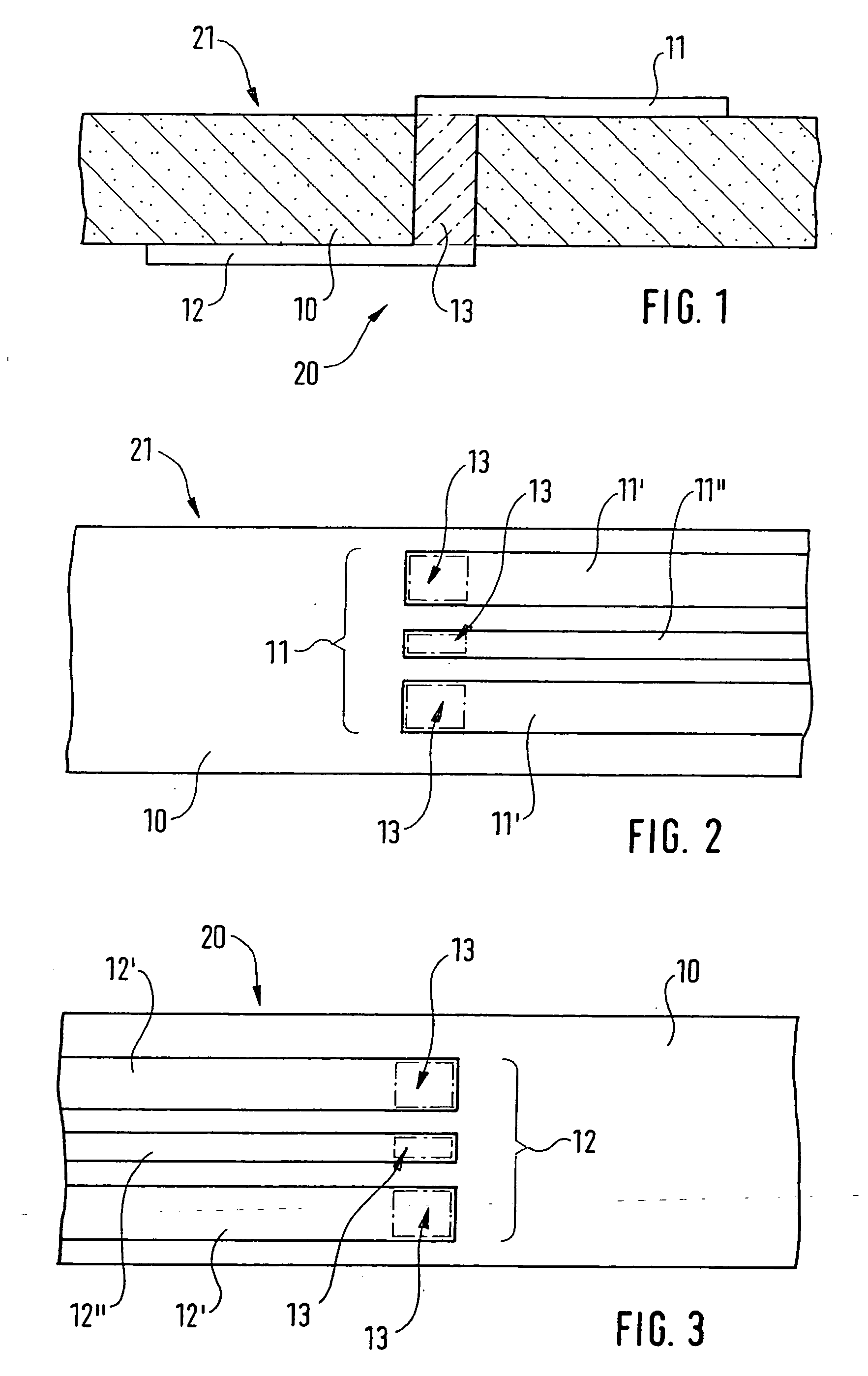Electrical system, especially a microelectronic or microelectromechanical high frequency system
a microelectronic or microelectromechanical high frequency system technology, applied in the direction of electrical equipment, semiconductor devices, semiconductor/solid-state device details, etc., can solve the problems of reducing the high-frequency properties of electrical components, requiring a large amount of space, and ensuring the requisite gas tightness or moistur
- Summary
- Abstract
- Description
- Claims
- Application Information
AI Technical Summary
Benefits of technology
Problems solved by technology
Method used
Image
Examples
Embodiment Construction
[0039]FIG. 1 explains a first exemplary embodiment for an electrical component 5 in the form of a high-frequency microelectronic component, a base element 10 in the form of a high-resistance silicon wafer having a specific electrical resistance of preferably more than 1000 Ω / cm being provided with a plurality of adjacent feedthroughs 13 or so-called “vias” that pass through base element 10 from its upper side 21 to its lower side 20. An upper conductive structure 11 is also provided on upper side 21, while a lower conductive structure 12 is located on lower side 20. Feedthroughs 13 are lined with a metal, for example gold, or another metal that can be deposited by electroplating. Lastly, provision is made for the lined feedthrough 13 to be connected in electrically conductive fashion to upper conductive structure 11 and to lower conductive structure 12, so that upper conductive structure 11 and lower conductive structure 12 are connected to one another continuously at least for high...
PUM
 Login to View More
Login to View More Abstract
Description
Claims
Application Information
 Login to View More
Login to View More - R&D
- Intellectual Property
- Life Sciences
- Materials
- Tech Scout
- Unparalleled Data Quality
- Higher Quality Content
- 60% Fewer Hallucinations
Browse by: Latest US Patents, China's latest patents, Technical Efficacy Thesaurus, Application Domain, Technology Topic, Popular Technical Reports.
© 2025 PatSnap. All rights reserved.Legal|Privacy policy|Modern Slavery Act Transparency Statement|Sitemap|About US| Contact US: help@patsnap.com



